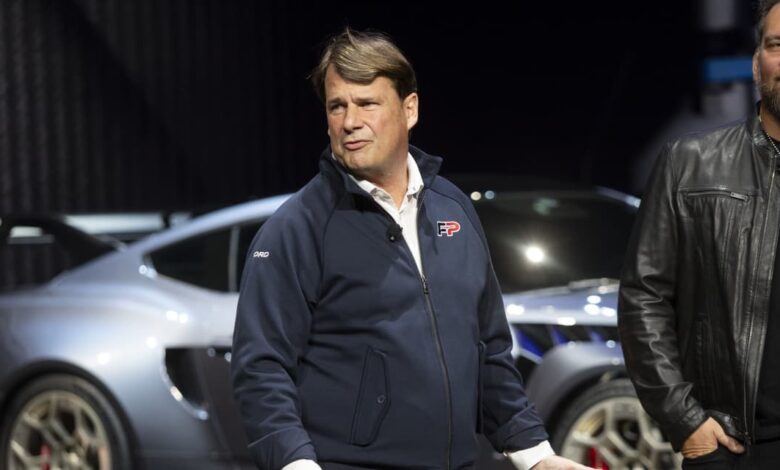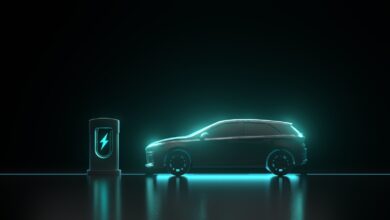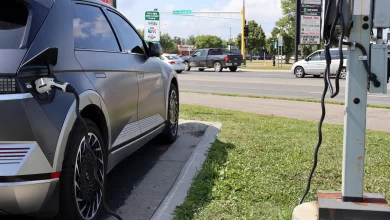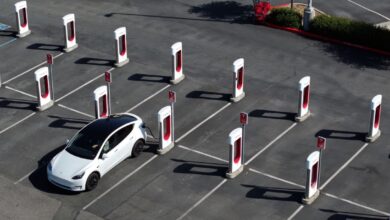Ford CEO Jim Farley Explains Why EV Sales Are Slowing as Hybrids’ Boom

Electric vehicle growth is waning, leaving the wider industry wondering if it’s spending billions of dollars wisely. Politics, vehicle affordability, and charging infrastructure have all been blamed.
Those issues matter—but according to Ford Motor CEO Jim Farley, battery-electric vehicles, or BEVs, face other headwinds, too.
“We’re entering new customers, the mainstream customers are not willing to pay a premium for EVs,” Farley told Barron’s. “They don’t know how to handicap the charging.”
Those are valid, well-understood points. Though all-electric car sales jumped 46% in 2023, sales grew just 3% in the first quarter of 2024.
It’s getting harder to find buyers willing to go all-electric—and pricing doesn’t help. The average new car in the U.S. cost about $48,500 in May, while the average new BEV cost roughly $55,0000, according to data provider Cox Automotive.
Advertisement – Scroll to Continue
As for charging, the U.S. has about 176,000 public charging ports. China has about 15 times that amount.
There are other things troubling car buyers, too. They don’t have a good feel for EV resale value, says Farley, adding “insurance has gone up and they don’t know how to handicap that.”
EV resale values are a problem—and can be attributed to Tesla. The average price of a Tesla in the U.S. is about $50,000, down 20% from more than $62,000 a year ago. The EV company has cut prices repeatedly since late 2022 to help offset falling demand. Large price cuts impact the value existing Tesla owners can sell their vehicles for.
Advertisement – Scroll to Continue
A car should have roughly 50% of its value at the end of three years. The value of a Tesla bought in 2021 is probably worth about 40% of what it was purchased for.
Insurance prices have also hit drivers across the U. S.—and make everyone more apt to look for a good deal. Insuring a car is now almost 50% more expensive than it was before the Covid-19 pandemic.
The situation with vehicle repair and maintenance isn’t much better. Average repair costs are up almost 40% compared with pre-pandemic levels.
As for EVs, they are cheaper to maintain than regular cars—they have fewer moving parts and no oil changes—but they are a little more expensive to repair on an apples-to-apples basis. Don’t forget that most EVs are considered luxury cars, so consumers shouldn’t compare the cost to repair, say, a Lexus with a Corolla.
What’s more, the number of EVs on the road also impacts repair costs: fewer EVs means fewer aftermarket parts available.
Going electric can be a daunting task. Car buyers “can do the math on a hybrid…they can figure out how much money they can save on the gas,” says Farley. “We cannot keep up with the capacity for hybrids.”
Advertisement – Scroll to Continue
Through May, Ford sold about 74,000 hybrids in the U.S., up about 51% year over year. In the U.S. hybrid sales grew about 65% in the first quarter, after growing 56% year over year in 2023.
Ford’s strategy is to offer traditional, hybrid, and all-electric cars to buyers. And Farley sees higher BEV sales in the future, as cheaper models become available and buyers get used to them.
BEVs will also have to be reasonable to repair and hold their value—two issues the EV industry can work on to drive all-electric car sales.
Through Friday trading, Ford stock was flat year to date, underperforming the
Advertisement – Scroll to Continue
by about 12 percentage points.
Ford shares trade for just 6.3 times estimated 2025 earnings. The S&P 500 trades for closer to 19.3 times. Investors typically don’t award traditional car makers big valuations multiples—and uncertainty about how hybrid, EV, and traditional sales will develop is one reason for the discount.
Write to Al Root at allen.root@dowjones.com



